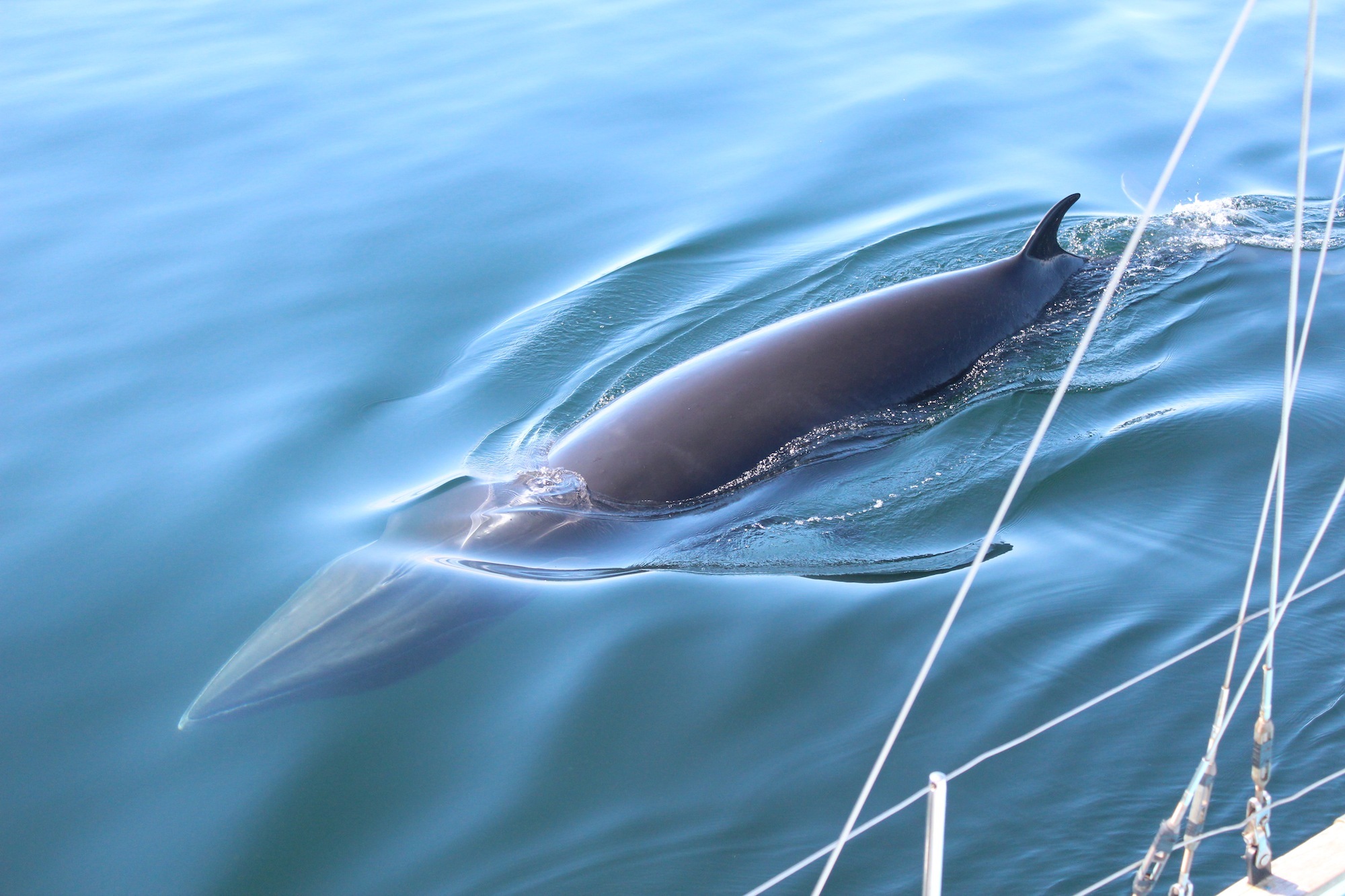A baby boom of minke whales off Scotland’s west coast could be under way after record numbers of juveniles were spotted.
Sightings of the young whales increased in 2015 to the highest ever recorded within a survey season, during marine research expeditions carried out by Hebridean Whale and Dolphin Trust (HWDT).
With 28 juveniles and 30 adults spotted, there was an unusually high proportion of juveniles to adults, three times the average of previous years.
The charity says this indicates either a significant increase in actual numbers or an influx of minke whales from elsewhere.
The research season also recorded the highest annual number of common dolphin sightings since its expeditions began, with 723 individuals observed over 63 encounters.
Common dolphins were once uncommon in the Hebrides, but the trust’s encounter rate with the species has more than doubled over the past 12 years, also for reasons that remain unclear.
Kerry Froud, HWDT biodiversity officer, said: “These intriguing changes in Scotland’s marine life highlight the importance of long-term monitoring of cetaceans – so that we can better understand what is happening in our waters, and then make management recommendations to better protect this world-class area of marine biodiversity.”
The studies were carried out between May to October by scientists and volunteers on board Silurian, the trust’s dedicated research yacht.
A steady increase in the encounter rate with minke whale juveniles since 2011 was particularly marked this year, with the highest rate of young whales recorded since the trust started boat-based surveys in 2003. The 2015 surveys documented an encounter rate of 1 young minke whale per 177 miles.
The minke whale is the smallest of the baleen whales – species which utilise baleen plates rather than teeth to feed – in the North Atlantic, measuring up to 33ft in length.
While the increase is encouraging, the charity says there are still very serious issues regarding the conservation of this migratory species. To the north of Scotland, both Iceland and Norway still hunt minke whales. It remains unknown whether or not the whales that swim through Scottish waters frequent the waters where they risk being hunted.
